Tennessee’s Tweetsie Trail
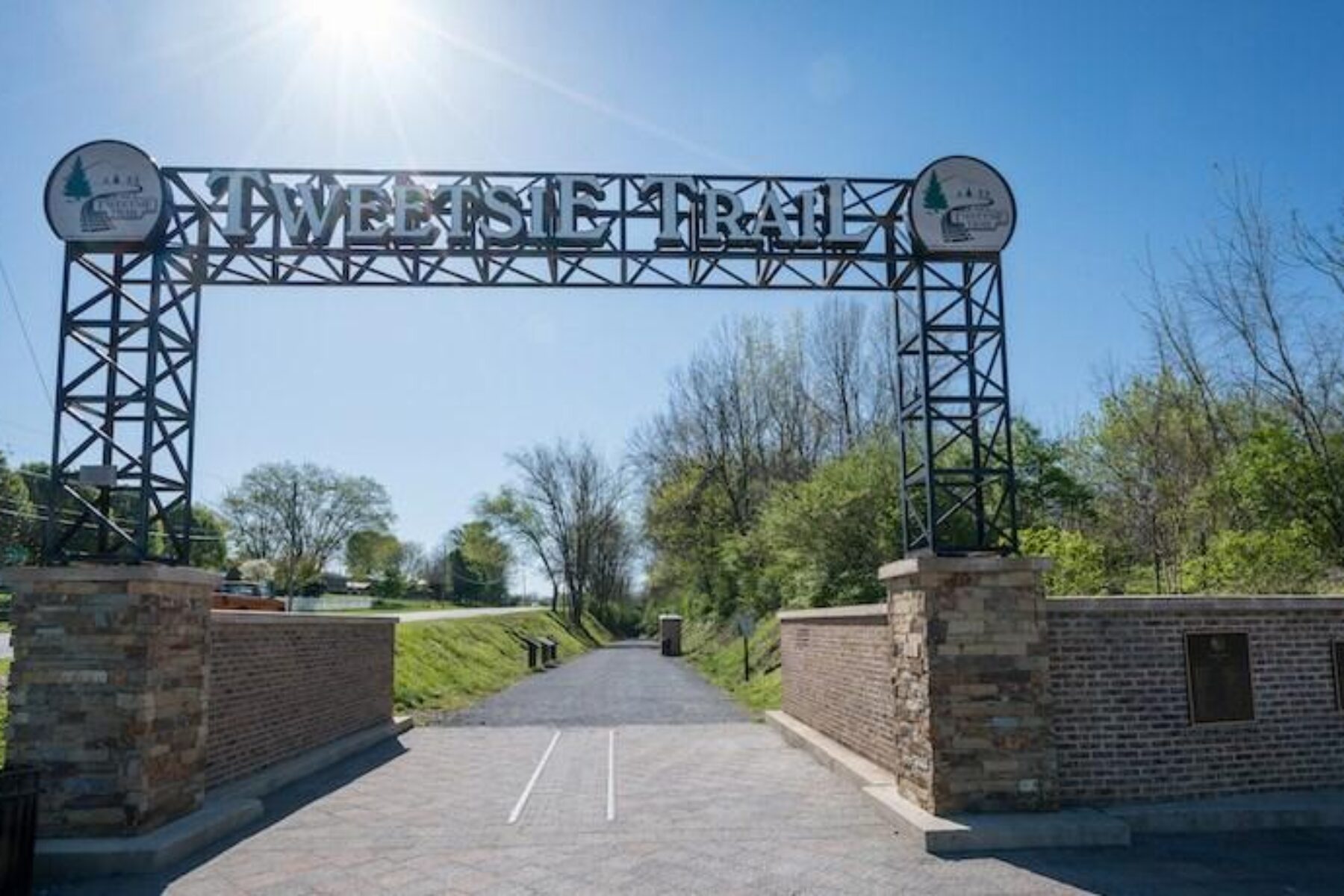
Trail of the Month: October 2020
“It’s a big thrill for me to see all these people—not just young people, but a lot of older people, too—getting out because the trail provides a safe place to walk and bike.”
—Dan Schumaier, Chairman, Tweetsie Trail Task Force
Nestled into the recreational playground of northeastern Tennessee, a homespun pathway connects two charming towns in the Appalachian foothills, following a railroad corridor that once snaked through the mountains and crossed into North Carolina. It’s been nearly two decades since trains rumbled down the narrow tracks and emitted the high-pitched whistles that gave the rail line—and later the Tweetsie Trail—its affectionate moniker. And it’s fitting that the route of the East Tennessee & Western North Carolina Railroad—once known as the “Railroad with a Heart” for its above-and-beyond service and heart-shaped ticket punches—is now the home of a beloved community amenity used by an estimated thousand people a day, year-round.
“Before the trail was there, we didn’t have any bikes in our area; now we’ve got bikes all over the place,” enthused Dan Schumaier, a local audiologist and chairman of the citizen task force originally charged with developing the 10-mile rail-trail. “It’s a big thrill for me to see all these people—not just young people, but a lot of older people, too—getting out because the trail provides a safe place to walk and bike.”
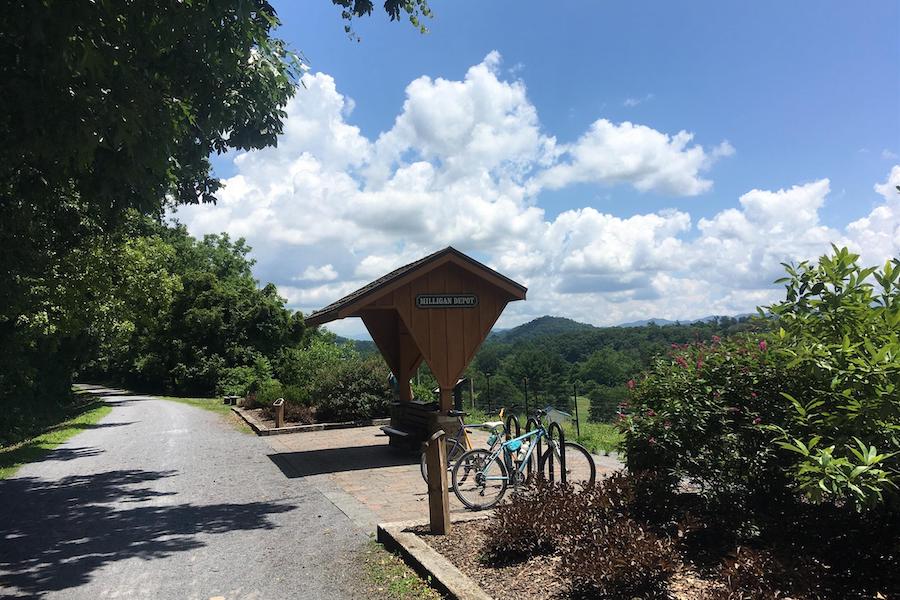
Within an hour’s drive, travelers can be hiking the Appalachian Trail and, within two, exploring the Great Smoky Mountains National Park. But the Tweetsie Trail offers something unique: a direct, car-free connection between Johnson City, home to East Tennessee State University, and quaint Elizabethton, one of Tennessee’s oldest towns and host to attractions like the Sabine Hill State Historic Site and Sycamore Shoals State Historic Park, both located just off the trail. Just a few years after opening, visitors today will find a welcoming community that takes great pride in its trail—and bike racks in front of nearly every store and restaurant. With stretches of picturesque pastures, hardwoods that put on autumnal color shows, and sigh-worthy overlooks of Happy Valley, it’s hard to imagine a more perfect place.
The Tweetsie Brings a New Song
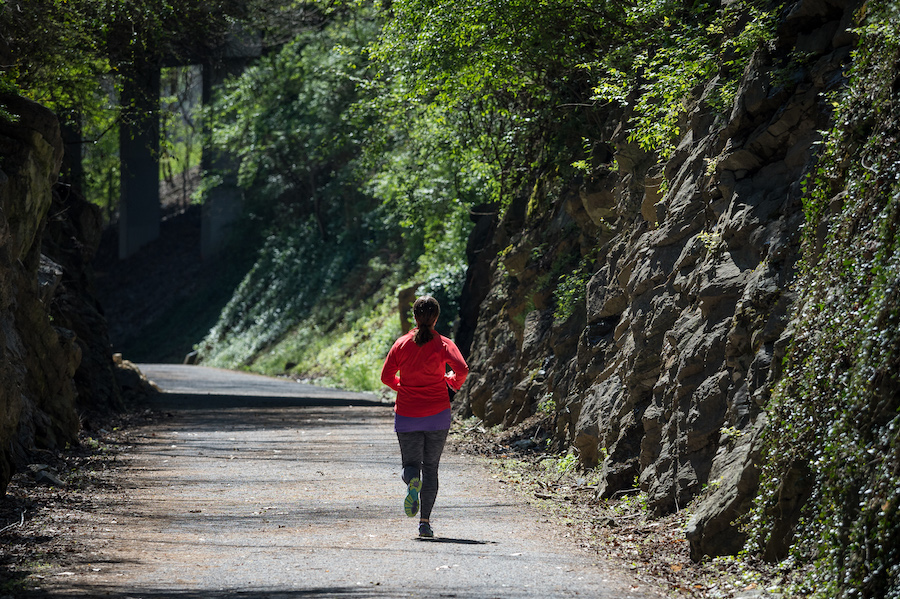
At mile-marker zero on the east end of Johnson City, the journey forward begins with a look back. Trail goers are greeted with a broad “Tweetsie Trail” sign arching overhead on metal scaffolding designed to resemble a railroad trestle. At their feet, a segment of the original track, dating back to the early 1880s, lies inlaid in the trail. Continuing down its firm, crushed-stone surface, the trail is bedecked with interpretative signage about the local history, geology and ecology. Within a year, trail advocates hope to add an old locomotive and rail car to a trailside park, too.
The trail itself begins with the quiet footfalls of longtime community advocate Dan Reese. It was 2005, and Reese was taking a walk along one of the main thoroughfares in Johnson City, which happened to parallel the tracks. He noticed some workers taking up old railroad siding in the corridor. Chatting with them for a bit, he learned that the tracks went all the way to neighboring Elizabethton and hadn’t seen use in a number of years.
“That’s when the bell went off in my head—ding!” Reese chuckled. “I gathered a bunch of my friends together, and we started talking about obtaining that right of way for a rail-trail. We went to the city commission and told them that we had a dream for the community: a safe area to walk, hike and bike.”
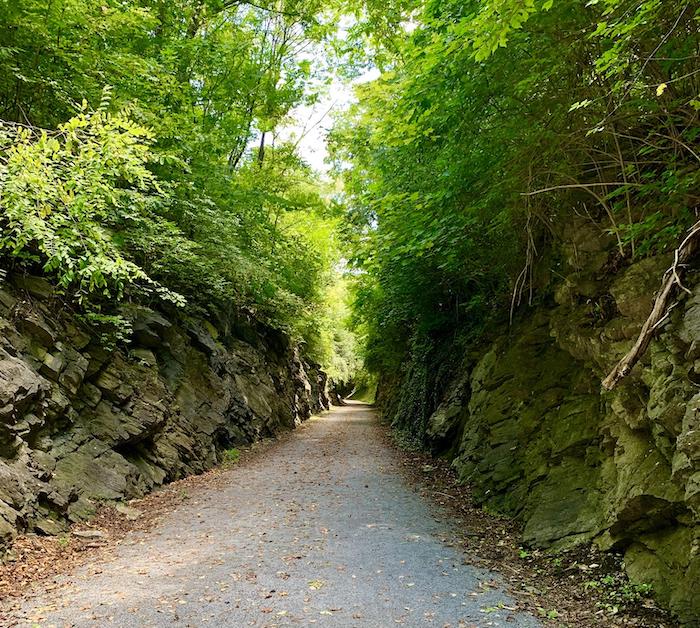
The handful of friends grew into a groundswell of support as they began organizing group walks along the railbed and started letter-writing campaigns to local government officials. Johnson City initiated negotiations with the railroad, and the corridor was successfully railbanked in 2011. Two years later, the acquisition was complete and the work to build the trail could begin; the newly formed Tweetsie Trail Task Force got right to work. When an outside firm put the initial bid for its construction at more than $6 million, the task force set about finding ways to drastically reduce the price tag.
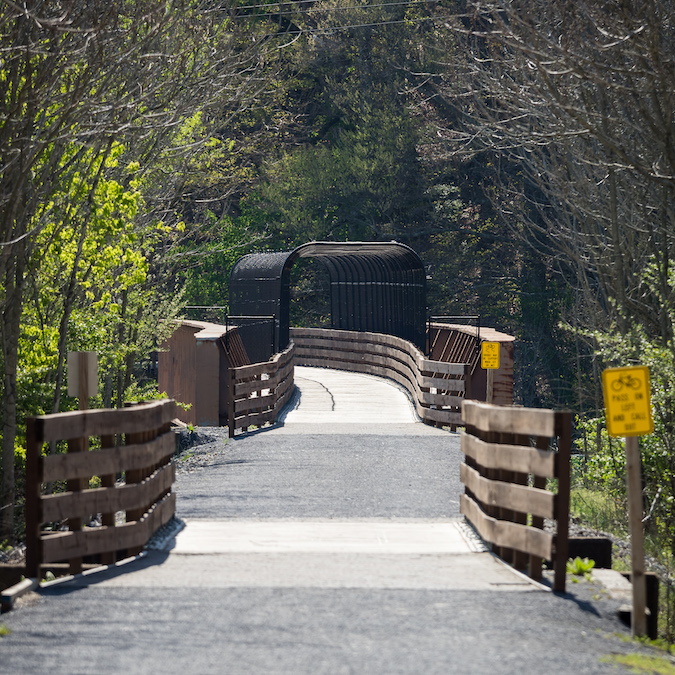
From all corners of the community, in-kind donations rolled in. Construction companies donated labor to build the trail’s bridges, the local quarry provided the rock for the trail’s surface, signage companies gave free trail signage, building-supply retailers sold wood and other materials to the city at cost—the list goes on. Funds were also raised by selling benches, bridges and brick pavers; donors would have their names engraved on plaques to be displayed on these items along the future trail. All told, this massive, collective effort brought the cost down to around $800,000.
“It doesn’t always take a giant chunk of money to do these things,” explained Reese. “Sometimes they can be done on a smaller scale with community cooperation. This was an opportunity for a community to come together and work together to make it a success.”
While a small contingent expressed hesitation about the project—especially fearful about the loss of future train traffic—trail proponents listened to their concerns and expressed optimism for future economic gains through the trail’s outdoor tourism appeal.
“When I saw the railroad ties begin to be removed, I realized that what was to come was going to be very special,” said Mike Mains, director of Elizabethton Parks and Recreation. “That was an exciting time because we began to see clearly what was to come and what the trail could do—and it wasn’t disappointing, that’s for sure. The trail has had nothing but a very positive impact on this community.”
The trail’s first 7 miles were completed in 2014, quickly followed by the last 3 miles in 2015. Upward of a thousand people were estimated to have attended the ribbon-cuttings.
“Once we opened it up, all the negativity went away because it’s a very, very popular trail,” said Phil Pindzola, director of Johnson City Public Works and a Tweetsie Trail task force member.
A Trail With a Heart
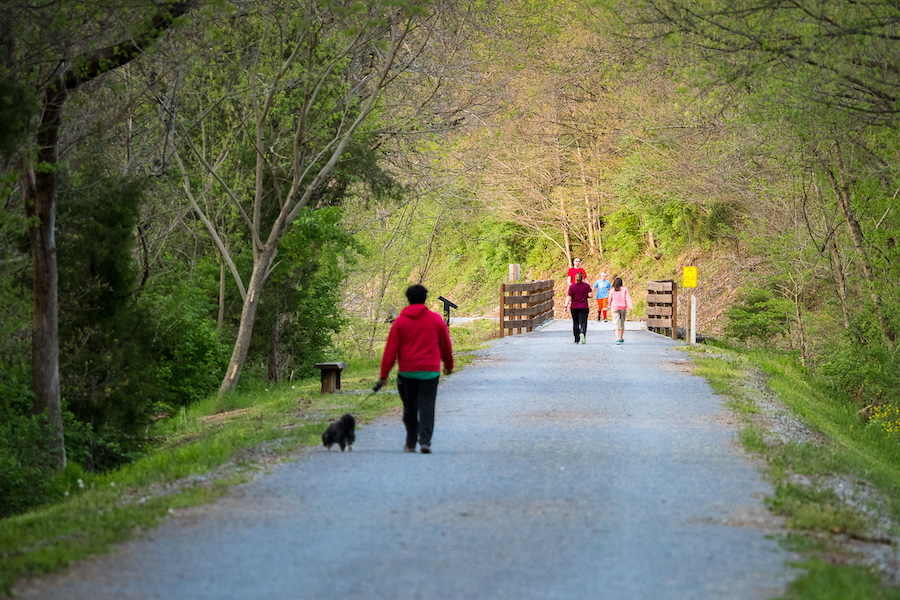
Over time, new businesses have popped up, and others have worked to make their properties more trail accessible, such as one restaurant owner that built a footbridge over a creek so that customers could reach his establishment from the pathway.
“The trail goes through two urban communities, and businesses welcome the people who are coming down the trail,” said Reese. “Instead of looking out your front door for customers, you look out your back door now with all the people streaming by. The trail has provided a whole new way of drawing customers.”
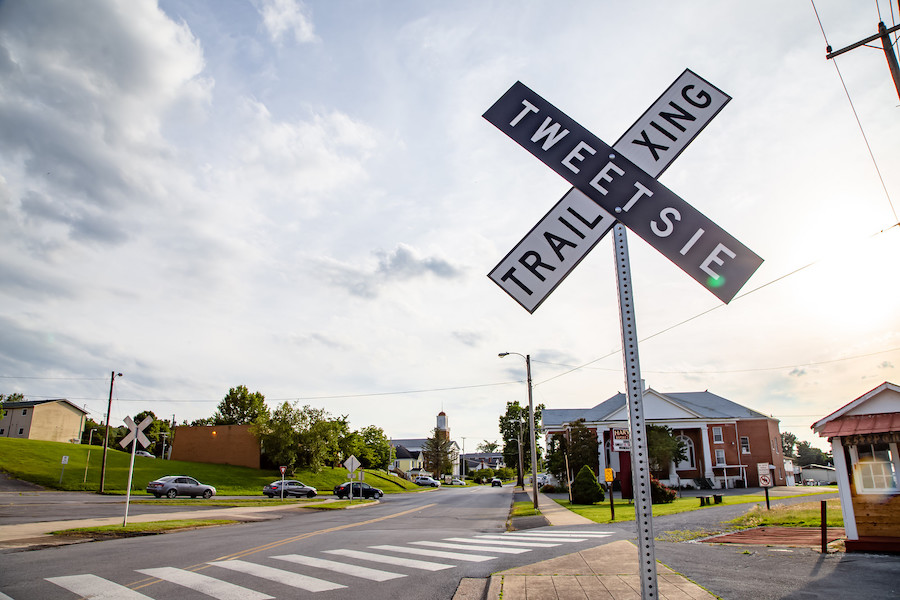
Seeing the economic boost brought by the trail to this rural corner of the state has spurred the community to implement additional projects that take advantage of the area’s bountiful natural settings, including fishing, whitewater rafting and mountain biking.
“Our county and city, we just don’t have a lot of industry,” explained Mains. “Now, I think they have seen what recreation can do. That’s the direction our local governments are going in: to see how we can provide recreational opportunities that will benefit our local economy.”
Coupled with tourism, the health impacts of the trail—and the free and easily accessible exercise it provides—are also rippling through the two cities. Tennessee typically sits in the bottom five of states ranked for overall health outcomes, but here in Johnson City, things are turning around thanks to the trail. In 2017, the city published the results of a citizen survey showing that about three-quarters of respondents rated the city’s recreation and fitness opportunities positively. Paths and walking trails, in particular, saw a huge jump in rankings from 36% positive in a 2012 survey (before the Tweetsie Trail existed) to 62% in the recent survey.
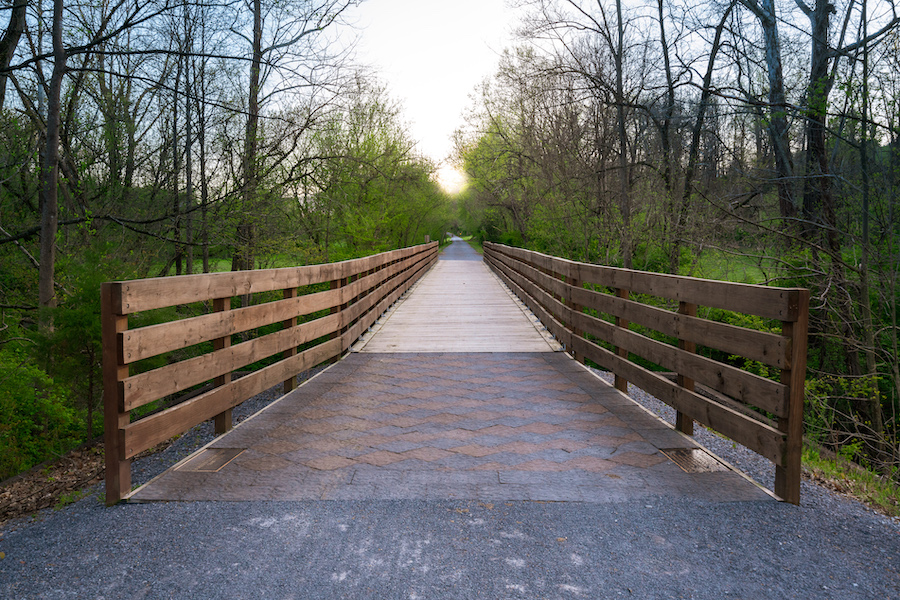
“Buying the rail-to-trail was a first for the city—investing in that kind of green infrastructure,” said Reese. “It was looking ahead to the fact that people will be using this to be healthy. We have a high rate of heart disease and diabetes in this area. Another important thing is that the trail passes through several Section 8 housing areas, and these families didn’t [previously] have a place to go to get out. Adding the trail is helping not just the spandex types, but also people on the lower echelon of income who needed recreational amenities.”
The strong sense of community spirit continues to this day with any number of volunteer projects, such as trailside tree plantings by Keep Carter County Beautiful, trash pick-ups by Carter County Proud and the addition of trail amenities, like pavilions, added by local Rotary clubs.
“People see it as an opportunity to give in a way that they wouldn’t have before,” enthused Reese. “They really have taken possession of the trail as their trail. To me, when a community does that, you know it’s a success.”
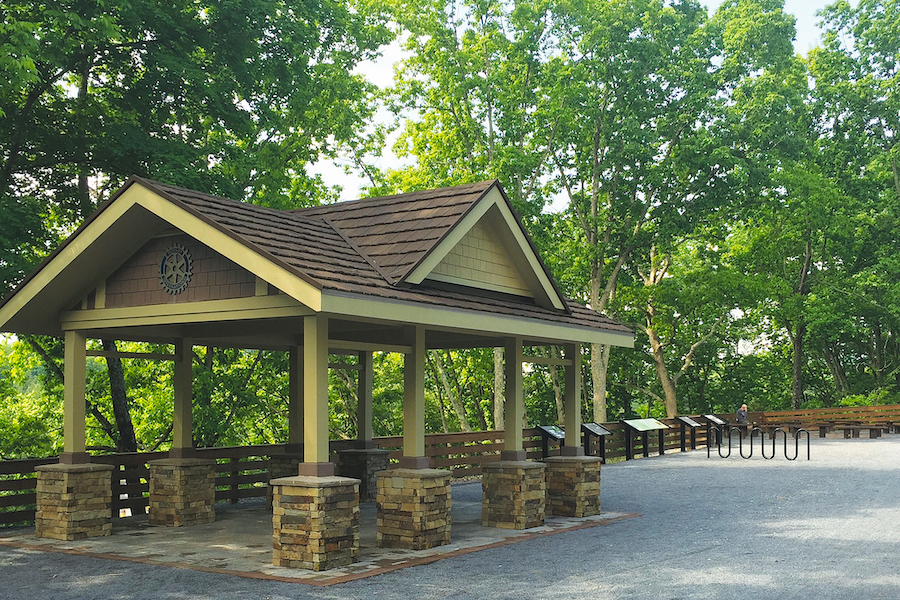

Donate
Everyone deserves access to safe ways to walk, bike, and be active outdoors.